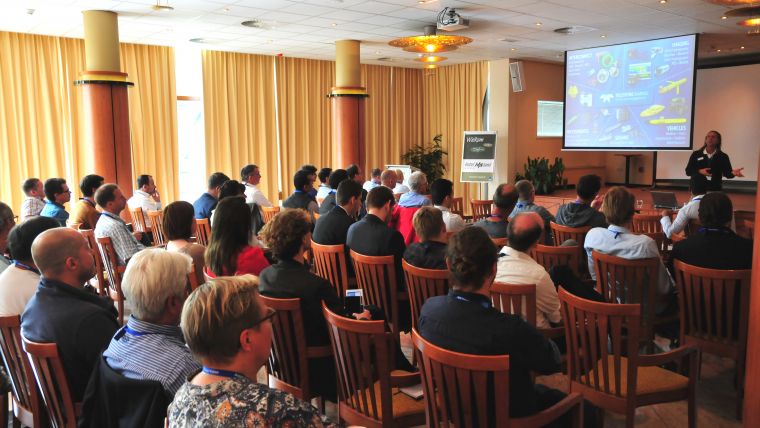Sharing ADCP Knowledge
European surveyors working with ADCP met in Utrecht, The Netherlands, on 15 and 16 June 2016 for the ADCP Workshop organised by AquaVision. As this event had already been held several times in the past, the format was familiar. The first day included technical updates and presentations, while the second day was dedicated to a good hands-on workshop programme for the delegates.
The participants were welcomed by Peter Meijer of AquaVision, host of the event. He updated the audience on the company, mentioning interesting projects that have been managed and giving an update on the acquisition of a new vessel that will extend the potential of the company. He then presented the first speaker, Arjen Kikkert, who shared the challenge of tracing 24% of the discharge water that seemed to be lost at the pumping station in IJmuiden using an ADCP on a cableway construction. Ton Hoitink of Wageningen University in the Netherlands gave an update on monitoring of suspended sediment transport, again using ADCPs. After the coffee break, Nino Olhle (Port of Hamburg) gave an interesting insight into the sediment transport fluxes in the Elbe where monitoring was used to manage the sediment in the port. Peter Hulst of the Roer and Maas Water Board presented the use of an ADCP in his work area with often challenging places.
Vessel Traffic
The afternoon started with a technology update on the Teledyne RDI devices by Darryl Simonds. He showed the technical advances and the consequences for the daily work practice. Cor Mooiman then took the stage and highlighted current aspects in the Port of Rotterdam. An interesting currents analysis of the Canal del Dique project in Columbia was presented by Johan Henrotte of Royal HaskoningDHV. The first day was concluded by Ata Can Çorakçi (TÜBÏTAK MAM Marmara Research Center, Turkey) with a presentation on the Vessel traffic service in the Bosporus by means of multiple ADCPs.
Hands On
The Thursday was reserved for workshops on data acquisition, data processing and visualisation. There were also field demonstrations of the Teledyne RDI RiverPro on a Q-Boat. The possibilities of other Teledyne RDI ADCPs were, of course, also highlighted during the sessions.
The organisers can look back on a successful and well-attended conference. And the delegates returned home with improved skills, ideas for further applications and more hands-on experience.

Value staying current with hydrography?
Stay on the map with our expertly curated newsletters.
We provide educational insights, industry updates, and inspiring stories from the world of hydrography to help you learn, grow, and navigate your field with confidence. Don't miss out - subscribe today and ensure you're always informed, educated, and inspired by the latest in hydrographic technology and research.
Choose your newsletter(s)
























